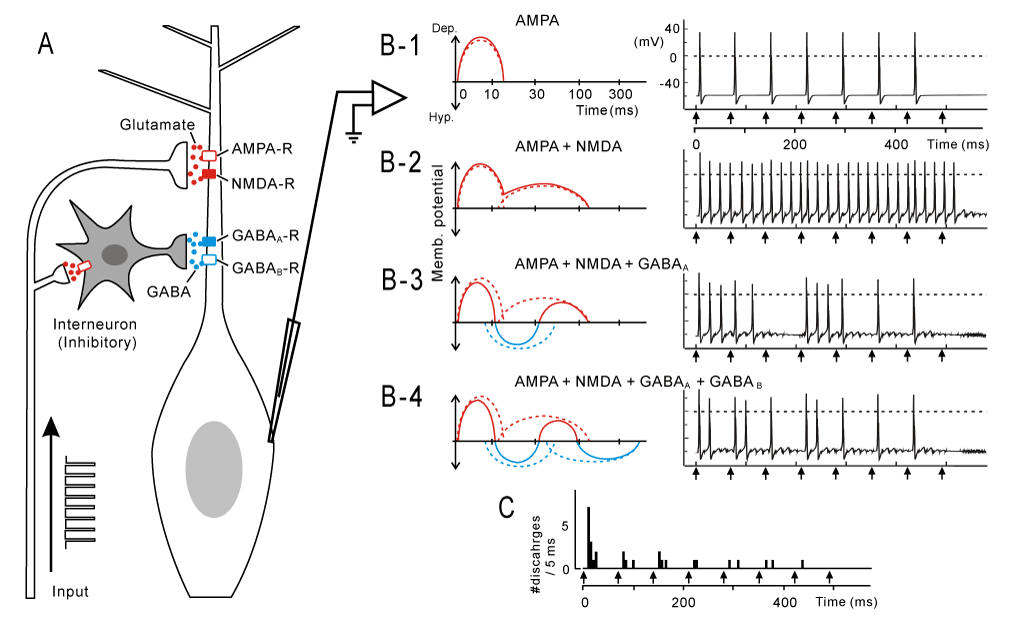
 |
| Figure 9: A: Local AI circuitry that was adopted for the neurocomputational model (Sakai et al. [1]). The model postulates (i) excitatory input to the pyramidal neuron is mediated through AMPA and/or NMDA receptors, (ii) inhibitory input is mediated through GABAA and/or GABAB receptors, (iii) each acoustic pulse is transmitted along the thalamocortical afferent fiber as a square wave (1ms in duration, 12.5 µAcm–2 in amplitude) and (iv) thalamocortical synaptic connections have no plasticity. B: Simulation results with various combinations of receptors (left) as for responses to the 70-ms-interval pulse train (right). The arrow indicates the input signal (same as followings). A version of the model that incorporated all four receptors (-4) is denominated as “4-receptor version”. C: responses to the 70-ms-interval pulse train for the unit in Figure 6A were transformed into PSTH for comparison purpose (same as followings). |